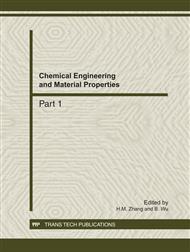p.955
p.960
p.964
p.968
p.973
p.978
p.982
p.988
p.993
Li(Ni1/3Co1/3Mn1/3)O2 with High Rate Capability Synthesized via a Novel Gel-Combustion Method
Abstract:
Li(Ni1/3Co1/3Mn1/3)O2 material with high rate capability was synthesized by a novel gel-combustion method using polyvinylpyrrolidone as a polymer chelating agent and a fuel. X-ray diffraction (XRD), scanning electron microscope (SEM) and energy dispersive spectrometer (EDS) were used to study the structure, morphology and element distribution of the Li(Ni1/3Co1/3Mn1/3)O2 material. XRD analysis showed that all samples were α-NaFeO2 structure and Li(Ni1/3Co1/3Mn1/3)O2 prepared at 900 °C had the highest c/a of 4.977 indicating the highest layered-ness. EDS scan demonstrated that the precursor was homogeneous. SEM images indicated all samples were well crystallized. Charge and discharge tests showed all samples had good rate capability. Among them, Li(Ni1/3Co1/3Mn1/3)O2 prepared at 900 °C had the highest capacity and the best rate capability. It delivered 162.1 mAh•g−1 at 0.25 C between 2.5 and 4.3 V and the capacity retention was about 81% compared to that of 0.25C rate.
Info:
Periodical:
Pages:
973-977
Citation:
Online since:
December 2011
Authors:
Price:
Сopyright:
© 2012 Trans Tech Publications Ltd. All Rights Reserved
Share:
Citation:


